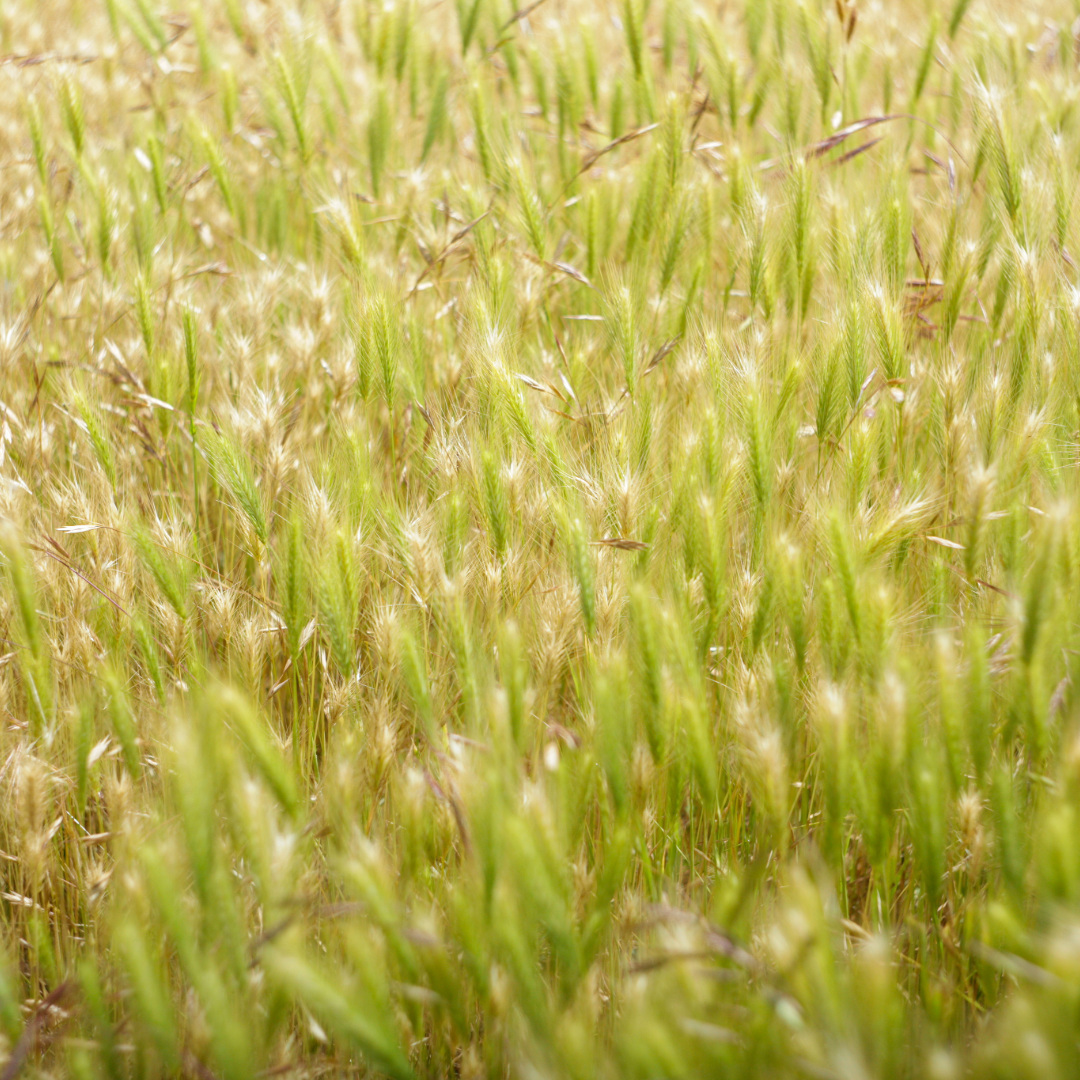
5 Hidden Dangers to your Dogs Health
Let’s explore five lesser-known risks to your dog's health: foxtails, blue-green algae, lungworm, fruit trees and acorns, and THC poisoning. We’ll explain each risk, where you might encounter them, how they can affect your dog, and what symptoms to watch out for. Let’s get started!
Foxtails
What: Foxtails are spiky, pointed grass seeds that grow on certain grasses during late spring and summer.
Where: Foxtails can be found in dry, grassy fields, meadows, and along trails. They grow in regions with a Mediterranean climate, but can also be found in other areas with similar environments.
How: The sharp barbs on foxtails allow them to attach easily to your dog's fur, then work their way into the skin, ears, eyes, nose, or mouth. Once embedded, they can cause painful abscesses or infections.
Symptoms: Symptoms vary depending on where the foxtail enters the dog’s body. In the ears, it can cause head shaking and scratching. In the nose, it may cause sneezing and discharge. If it becomes embedded under the skin, it can lead to swelling and abscesses.
Blue-Green Algae
What: Blue-green algae (cyanobacteria) are microorganisms found in freshwater bodies that can release toxins harmful to dogs.
Where: It is commonly found in stagnant or slow-moving water sources such as lakes, ponds, and rivers, especially during hot, dry weather.
How: Dogs may ingest the algae or drink contaminated water while swimming or playing. The toxins can cause severe liver damage or neurological issues.
Symptoms: Early signs of blue-green algae poisoning include vomiting, diarrhea, lethargy, and difficulty breathing. Seizures, muscle twitching, and loss of coordination may follow, and exposure can be fatal if not treated quickly.
Lungworm
What: Lungworm is a parasitic worm that can infect a dog’s lungs and respiratory system.
Where: Lungworm is often found in areas with high slug and snail populations. Dogs can also contract the parasite from drinking contaminated water.
How: Dogs can become infected by eating infected slugs, snails, or frogs, as well as from drinking water that contains lungworm larvae.
Symptoms: Symptoms may include persistent coughing, wheezing, shortness of breath, lethargy, weight loss, and in severe cases, blood in vomit or stool. Lungworm can be fatal if not treated.
Fruit Trees & Acorns
What: Fruit trees can pose risks to dogs due to their fruit pits, which can contain cyanide or present a choking hazard. Acorns from oak trees contain tannins, which can be toxic to dogs.
Where: Fruit trees and oak trees are common in parks, gardens, and outdoor areas. Dogs may encounter them during walks or in your own backyard.
How: Dogs may eat fallen fruit or acorns, exposing them to toxins and causing blockages in their digestive system.
Symptoms: Signs of fruit pit poisoning include labored breathing, vomiting, and potential cyanide poisoning. For acorn toxicity, symptoms include vomiting, diarrhea, abdominal pain, and in severe cases, kidney failure.
THC Poisoning
What: THC is the psychoactive compound found in cannabis plants and products.
Where: THC can be found in cannabis plants as well as products such as edibles and oils.
How: Dogs can ingest THC by consuming cannabis plants or products left within their reach.
Symptoms: Symptoms of THC poisoning in dogs include lethargy, drooling, dilated pupils, incoordination, tremors, vomiting, and seizures. In severe cases, it can lead to respiratory distress, coma, and death.
These five overlooked risks can pose significant threats to your dog's health, so it's important to be vigilant. Regularly checking your dog for foxtails, avoiding stagnant water, using preventive medication against lungworm, monitoring access to fruit trees and acorns, and keeping cannabis products out of reach can help you protect your dog from these hazards. Always consult your veterinarian if you suspect your dog has been exposed to any of these risks or shows any concerning symptoms.











